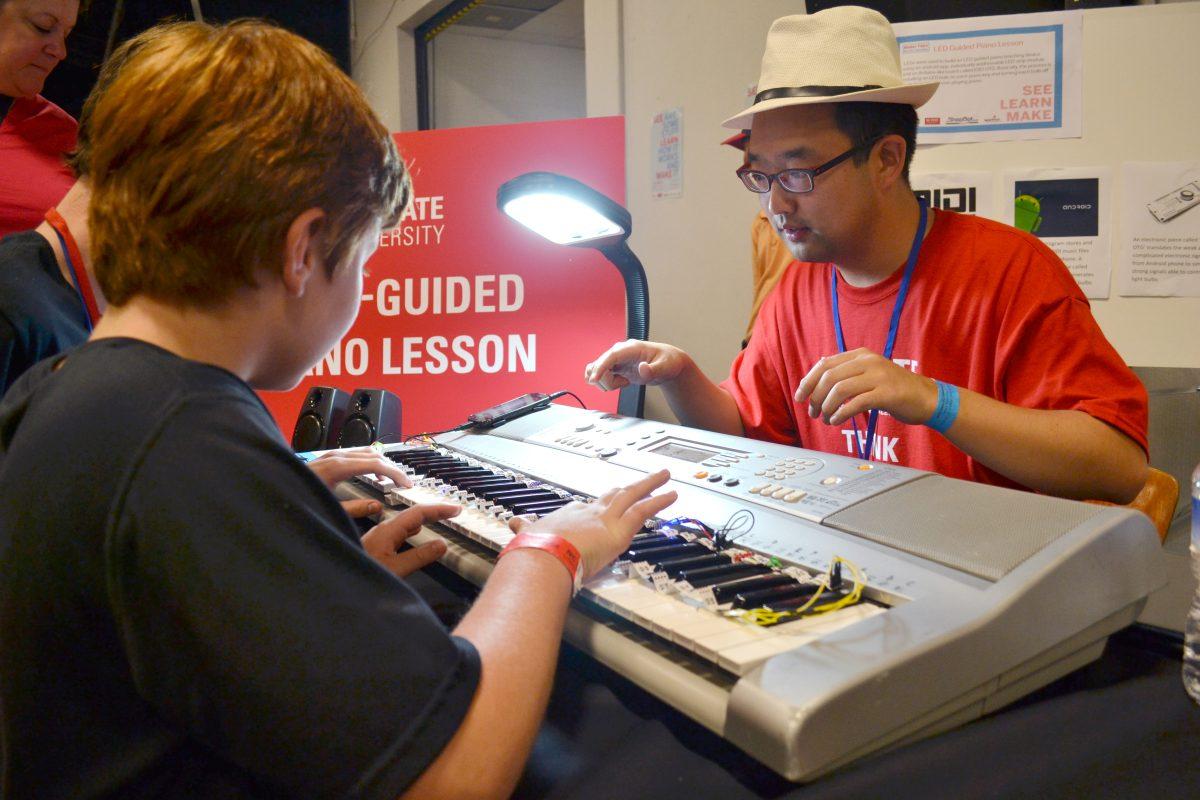Hundreds of visitors created personalized keepsakes and viewed homemade contraptions at the N.C. State sponsored Maker Faire North Carolina exhibition at the State Fairgrounds Saturday.
Maker Faire, now in its fifth year, is a hands on exhibition part of a network of more than 100 fairs nationwide geared towards celebrating all things made, from Lego masterpieces to pumpkin-throwing catapults and, in the case of a group of student creators from N.C. State, a 3-D printing photo booth.
As part of a senior design project, William Galliher, a graduate student in electrical and computer engineering, and his teammates created a 3-D scanner booth that acted as a 3-D photo booth open to all the visitors of Maker Faire.
Those who participated in the booth demonstration would approach the interface and get on a spinning platform where they were given a 10-second countdown. Then, in about 90-seconds using three cameras with sensors, it spun them around and created a 3-D model based on the person, according to Galliher.
After the model was created, participants got a file that was ready to print at the Makerspace in Hunt Library or another 3-D printer where they could print out a little figurine of the initial photo.
“This project was part of the first group in electrical and computer engineering to be a two semester project,” Galliher said.
Galliher said the fall 2013 semester was spent primarily planning the 3-D photo booth, and then the team, which consisted of Galliher as well as recent grads, Austin Carpenter, Jonathan Gregory and Dennis Penn, spent the spring semester putting the plan into action. The final booth took about two months from beginning to completion to build and make ready to be presented at Maker Faire.
Galliher said the most fun parts about Maker Faire were seeing the number and variety of people who were interested in trying out the 3-D photo booth and getting the opportunity to interact with them.
“We had over an hour long line the entire time that Maker Faire was open,” Galliher said. “We even had a team of singing pirates come through and all get scanned. It was a lot of fun.”
The booth scanned a total of 158 times by the end of Maker Faire, according to Galliher.
Galliher said the booth will be available in Hunt Library for public use, he hopes within the next few weeks.
“Once it is in the library it will be free for anybody to come in and use,” Galliher said. “They can get themselves scanned, and they can print out a little figurine of themselves if they want.”
The team decided to keep the booth’s design relatively low-key and easy to use in order to keep people excited about the concept and to draw attention to 3-D printing and its possibilities.
“It’s not necessarily a scientific tool,” Galliher said. “We could make it higher detail if we wanted to, but we didn’t want people to get bored by using it.”
N.C. State’s sponsorship of the event helped give students such as Galliher and his teammates the opportunity to present their work to the public in an interesting and interactive way, Galliher said.
“Maker Faire is a really neat place where anybody who has an idea, and decides that they actually want to make that idea, go ahead and do it,” Galliher said.
The North Carolina Maker Faire event is a scaled-down version of larger fairs in New York and California. Executive producer Jon Danforth of Maker Faire N.C. told the N&O the event is 70 percent “show and tell,” 30 percent “show and sell,” and was always meant to be hands-on and family oriented.
“We really want it to be a carnival and a celebration,” Danforth said. “We aren’t a nonprofit, but we want to make sure people aren’t overwhelmed by it being a sales-oriented event.”








